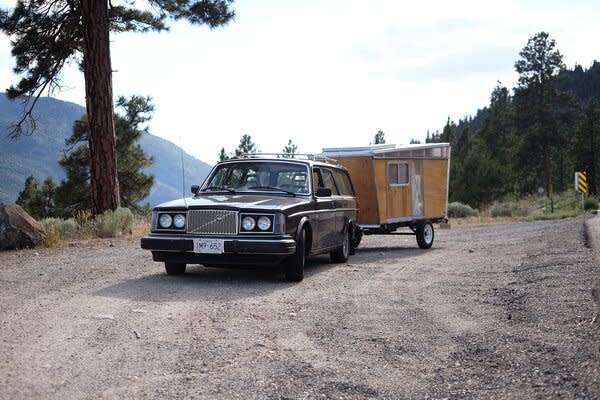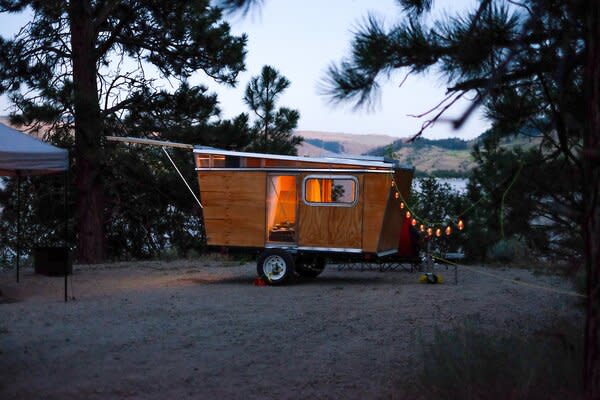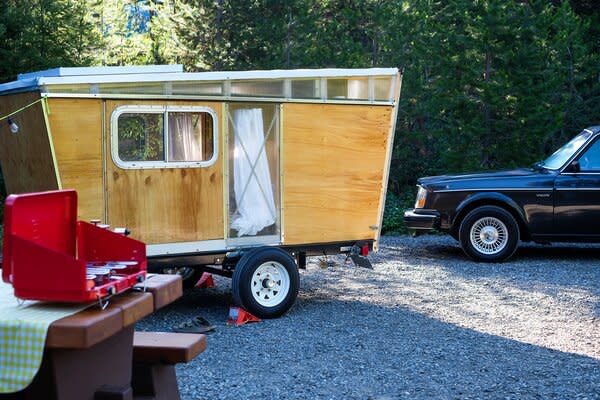Budget Breakdown: This $4,500 DIY Camper Is One Designer’s Ticket to Outdoor Adventure
Douglas Peterson-Hui uses plywood and salvaged parts to craft a tiny trailer packed with vintage vibes.

In the late spring of 2022, while camping with friends along the Campbell River on British Columbia’s Vancouver Island, architectural designer Douglas Peterson-Hui had an unusual thought for someone about to sleep in the woods. "I was hoping it would rain," he says.
The trip marked the maiden voyage for his newly built camper, dubbed the Wooden Wedge. "It was a bit of a journey getting there," he explains. "I had to take a ferry, but there were no big problems. I was hoping to see how it did in the rain."
Although the weather stayed clear for that particular trip, Douglas, a junior architect at the Vancouver office of Perkins & Will, has since taken the Wedge on the road in all types of weather—and it holds up. Clocking in at just four feet by eight feet, the camper, which Douglas designed and constructed himself for just under $4,500, is built on a trailer and light enough to tow behind his vintage Volvo station wagon.
"It was the pandemic, and everyone was home—I needed a project," Douglas recalls. "I’ve always liked to work with my hands. I’ve built tiny houses, worked on vehicles...I love to tinker. At the time, everyone was camping and hiking to get out of the house, so I thought it would be cool to build a camper that I could tow behind my car—but my car is small, so it had to be light."
See the full story on Dwell.com: Budget Breakdown: This $4,500 DIY Camper Is One Designer’s Ticket to Outdoor Adventure
Related stories:




